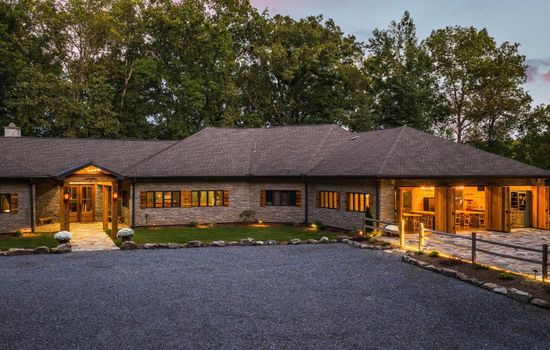The visitor center at Tuskegee Airmen National Historic Site is open Monday through Saturday from 9:00 AM to 4:30 PM. It is closed on Sundays, New Year’s Day, Thanksgiving Day, and Christmas Day.
There is no entrance fee at Tuskegee Airmen National Historic Site; it is free to visit year-round.
From Montgomery, take Highway 80 East to Tuskegee, then follow Chappie James Avenue to a poignant tribute to aviation history, nestled in the heart of Alabama’s rich cultural landscape.
Parking is available in a large lot above the air museum, accommodating cars, motorhomes, and motorcycles. No overnight parking; free admission and parking.
Accessibility & permits
Emergency
- Cell service availability:None
Information not accurate?
Help us improve by making a suggestion.
Tuskegee Airmen National Historic Site, located in the heart of Tuskegee, Alabama, is a poignant and historically rich destination that transcends the typical bounds of a national historic site. Here, amidst the rolling hills and verdant landscapes of the Deep South, the legacy of the Tuskegee Airmen comes alive.
The site is centered around Moton Field, a historic airfield where the first African American military pilots, known as the Red Tails, underwent their rigorous training during World War II. The rehabilitated hangars now serve as a museum, housing an extensive collection of artifacts and even one of the planes these pioneering pilots flew.
As you walk through the grounds, the air is filled with the stories of courage and perseverance. The landscape, dotted with historic buildings, evokes a sense of nostalgia and pride. Visitors can explore the museum free of charge, delving into the intricate history of these trailblazing airmen.
Guided tours offer a deeper insight into the daily lives of the Tuskegee Airmen, while the ADA-accessible facilities ensure that all visitors can partake in this educational and moving experience. The site is open from Wednesday to Saturday, allowing ample time to absorb the significance of this place.
Nearby, the charming town of Tuskegee beckons with its rich cultural heritage, including the Tuskegee University and the Tuskegee Institute. Local artisans and historic lodges add to the allure, making this a destination that not only educates but also enriches the soul.
For those seeking a more immersive experience, the site occasionally hosts special events and programs that bring the history to life. Whether you are a history enthusiast, an aviation buff, or simply someone who appreciates the bravery and determination of the human spirit, the Tuskegee Airmen National Historic Site is a must-visit destination that will leave you inspired and enlightened.
- Annual visitors
- 457 745
- Established year
- 1998
Top 3 Facts about Tuskegee Airmen National Historic Site
The site honors the achievements of over 1,000 Black pilots trained from 1941-1946, who had one of the lowest loss records among escort fighter groups during World War II, with a remarkable success rate in escorting bombers.
Amidst the historic grounds, a diverse array of wildlife thrives. White-tailed deer and eastern box turtles inhabit the lush landscapes, while red-shouldered hawks and American kestrels soar overhead. The area’s wetlands are home to alligators and various fish species, such as largemouth bass and bluegill. Native flora includes longleaf pine, oak trees, and vibrant wildflowers like the black-eyed Susan and coreopsis, adding a kaleidoscope of colors to the site’s natural beauty. This seamless blend of history and nature creates a unique and captivating experience for visitors.
Adjacent to this historic site lies the Tuskegee National Forest, where visitors can explore trails surrounded by towering pine and hardwood trees. The forest’s scenic overlook offers a glimpse of the rolling Alabama countryside, with temperatures often soaring to 90°F in the summer and dipping to 40°F in the winter. The nearby Chewacla State Park features a 26-acre lake, its waters reflecting the vibrant hues of the surrounding foliage.
Family programs
- Junior Ranger
- Self-guided Tours
- Workshops & Hands-on Activities
- Living History & Cultural Demos
- Scavenger Hunts
- Volunteer & Stewardship
- Scouting Partnerships
- Virtual Junior Activities
Travel Tips
Plan Ahead
Visit in spring for mild weather and Ranger Talks. Park on the hill overlooking historic hangars, then walk the paved, wheelchair-accessible path. Plan for an afternoon, bringing a picnic lunch as on-site options are limited. Rest on benches along the way.
Pack Appropriately
Pack light, breathable clothing for summer visits; layers for spring and fall. Bring sunscreen, comfortable shoes, and hydrating fluids. For winter, include warm, waterproof gear. Check the season to prepare for extreme heat or cold.
Respect Wildlife
Keep pets leashed, avoid disturbing native flora, and respect wildlife habitats, especially during hot Alabama summers. Leave the area as you found it to preserve its natural beauty.
Stay Informed
Stay on marked trails, avoid ledges and water areas, and check weather conditions and park alerts. For emergencies, call 911 or park authorities. Follow all signs and rules to ensure a safe and enjoyable visit.
Seasons
In spring, as temperatures rise to the 70s and 80s, experience the rich history of America’s first African American military aviators. Attend the Tuskegee Airmen Day Celebration in March, featuring tribute events and military band performances. Mild weather makes spring an ideal time to visit.
Visit in summer for warm temperatures (80s-90s°F) and humid weather. Enjoy the Fourth of July celebration with kids’ games and prizes. A perfect time to honor history and independence.
Visit in fall, when mild temperatures (60s-70s Fahrenheit) and crisp weather enhance the historic landscape. Join the Tuskegee Airmen Day in March, but for fall, enjoy the Veteran’s Day celebrations from September to November, honoring the bravery and legacy of these pioneering aviators.
Visit from December to February for a serene winter experience, with temperatures ranging from 40°F to 60°F. Mild winters make it an ideal time to explore historic hangars and immersive exhibits without the summer crowds. Cooler weather enhances the site’s nostalgic charm.
Information not accurate?
Help us improve by making a suggestion.
Where to stay
Frequently Asked Questions
Ready to dive into what Tuskegee Airmen National Historic Site has to offer? Let’s tackle some of the burning questions you might have as you plan your visit!
-
The closest city to the site is Tuskegee, Alabama. This historic site is located at Moton Field in Tuskegee, which was established on November 6, 1998.
-
Dogs are allowed in outdoor areas if they are on a leash no longer than 6 feet, but they are not permitted inside buildings or museums. They can explore the Historic Core and Overlook areas. Owners must keep their dogs under immediate control at all times.
-
Yes, parking is free at the site. There is parking available at the overlook area. It includes space for various vehicles such as campers, trailers, and motorhomes.
-
You can tour the outside grounds and visit museums in Hangars 1 and 2 at Moton Field, which include restored vintage airplanes, a full-sized red tail P-51 Mustang, and interactive exhibits. There are daily Ranger Talks at 10 am and 2 pm, and you can participate in the Junior Ranger program. The site also features a control tower, briefing rooms, and a parachute packing area, with free admission from Wednesday to Saturday, 9:00 AM – 4:30 PM.








